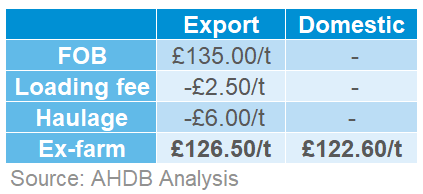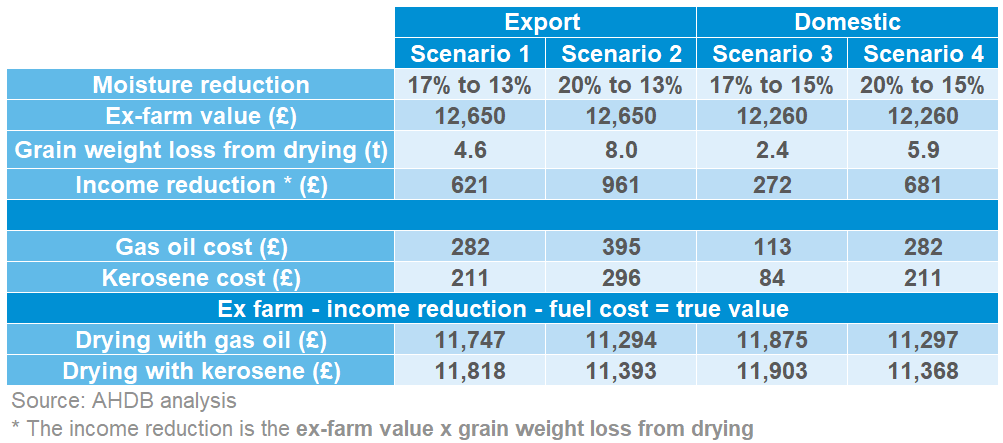Analyst Insight: can I still dry my barley for an export market?
Thursday, 20 August 2020
Recent adverse weather and precipitation will slow the rapid pace of harvest that we’ve seen in the last few weeks. It also will pose an extra cost to farmers and growers who need to dry their grain to a specification moisture content to satisfy an end processor.
Therefore, it’s paramount that we update and re-publish work that was conducted in May by the Arable Market Intelligence and Farm Economics team which answered the question of; shall I dry my barley for the export market?
With a bearish outlook for domestic barley for the 2020/21 marketing year, combined with an uncertain trading future with the EU, exporting barley to a third county, such as to states around the Mediterranean Sea, post Dec 2020 could be the only option. However, it could also be an economically viable option if planned and managed well.
Export markets posing an opportunity
I am still going to use 4 different scenarios looking at using gas oil and kerosene.
Kerosene is the most common fuel used as it burns cleaner than diesel reducing risk of tainting the crop. Drying by gas produces excessive moisture so requires increased thermal input to dry the grain.
In the table below the ex-farm price has been quoted from the AHDB’s latest Corn Returns, which has given us a domestic price out of the East and an indictive Free-on-Board export price out of the East Coast, loading and haulage have been deducted to give an ex-farm price.
Please note this price will change depending on geographical location and increased haulage rates to ports.

Do I dry my grain for a domestic or export market?
Assumptions have been made that the fuel usage rate (how many litre of fuel it takes to dry 1 tonne of grain by 1%) of gas oil and kerosene is 1.2L and 1.32L, respectively. These are based on industry benchmarks.
Furthermore, all these figures are based on the sale of 100t of barley. Within this calculation, gas oil and kerosene have been assumed to cost £0.47/L and £0.32/L, respectively (Please note; in May Kerosene was priced at £0.22/L, gas oil is unchanged).

Drying for export economically viable?
As we can see from the results drying your barley for an export market could be an economically viable option.
Drying with kerosene is still the cheapest way to dry, however since May the price per litre has increased by £0.10, as it slowly closes in on gas oil.
We should also remind the reader that extra haulage costs for port movement may need to be included in order for grain to move from surplus areas to ports.
To calculate the weight loss associated with drying cereals be sure to check out AHDB’s grain moisture calculator.
Concluding thoughts
With challenging weather conditions throughout this season and a large barley crop currently being harvested, there is going to be a lot of barley around as we start this marketing year. Further to that, there is going to be a question around quality of malting crops from the very dry spring.
Leaving the drier on for longer and getting the moisture down to third country exports may actually open a market in which your barley grain could be fed into.
Sign up for regular updates
You can subscribe to receive Grain Market Daily straight to your inbox. Simply fill in your contact details on our online form and select the information you wish to receive.

